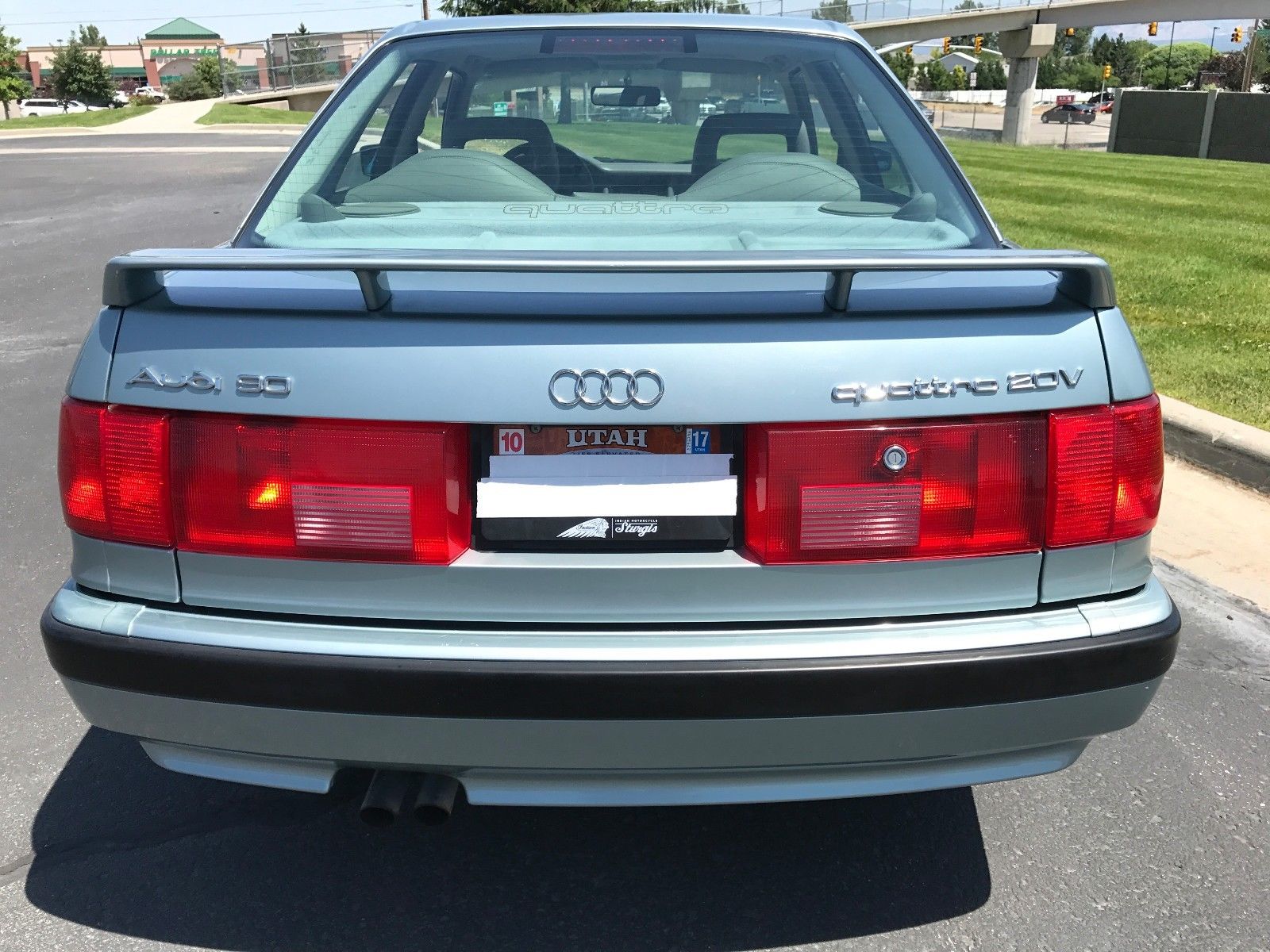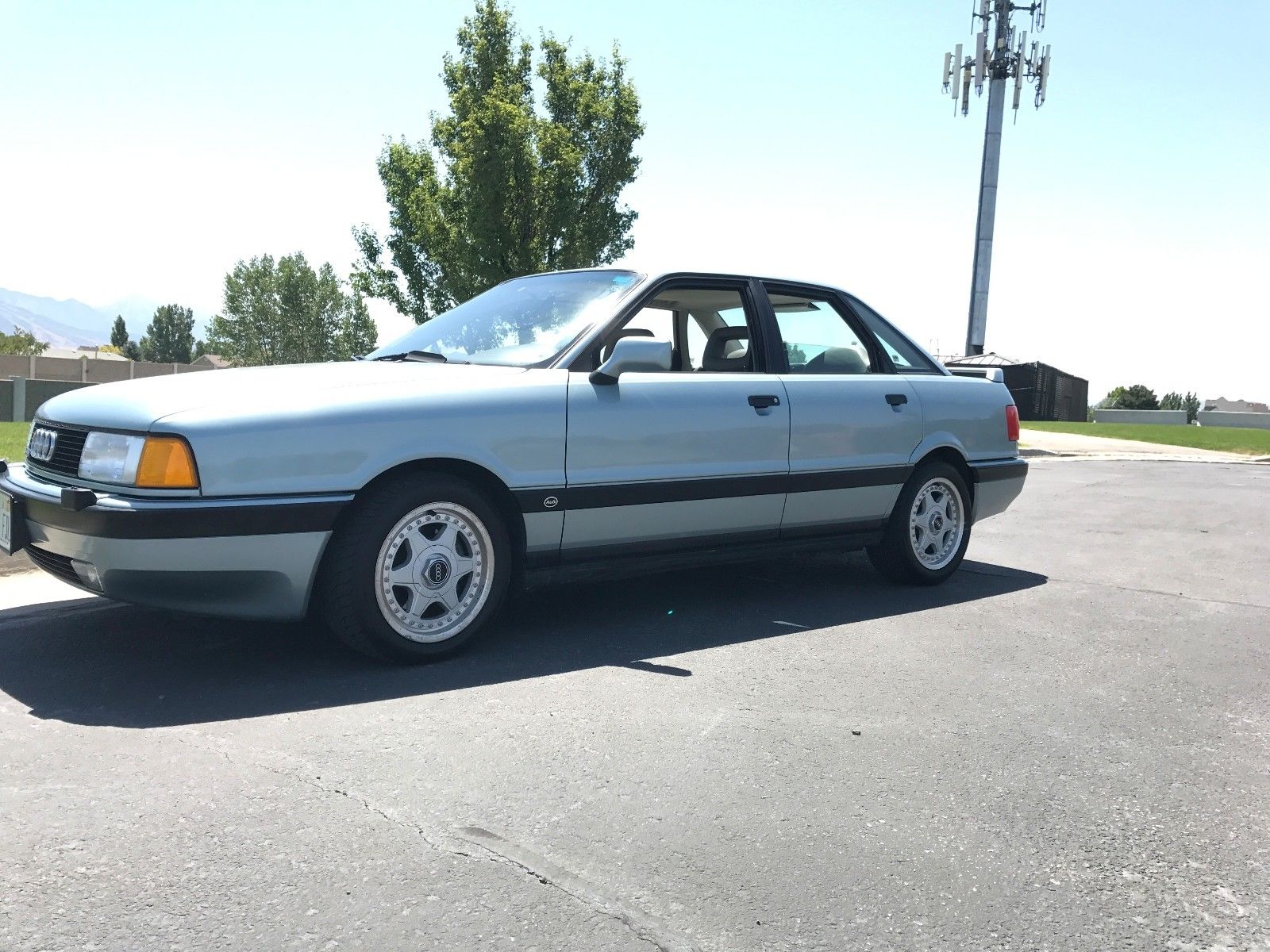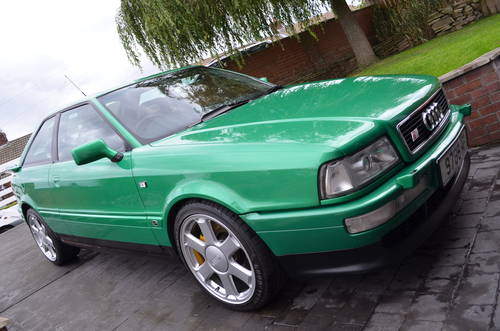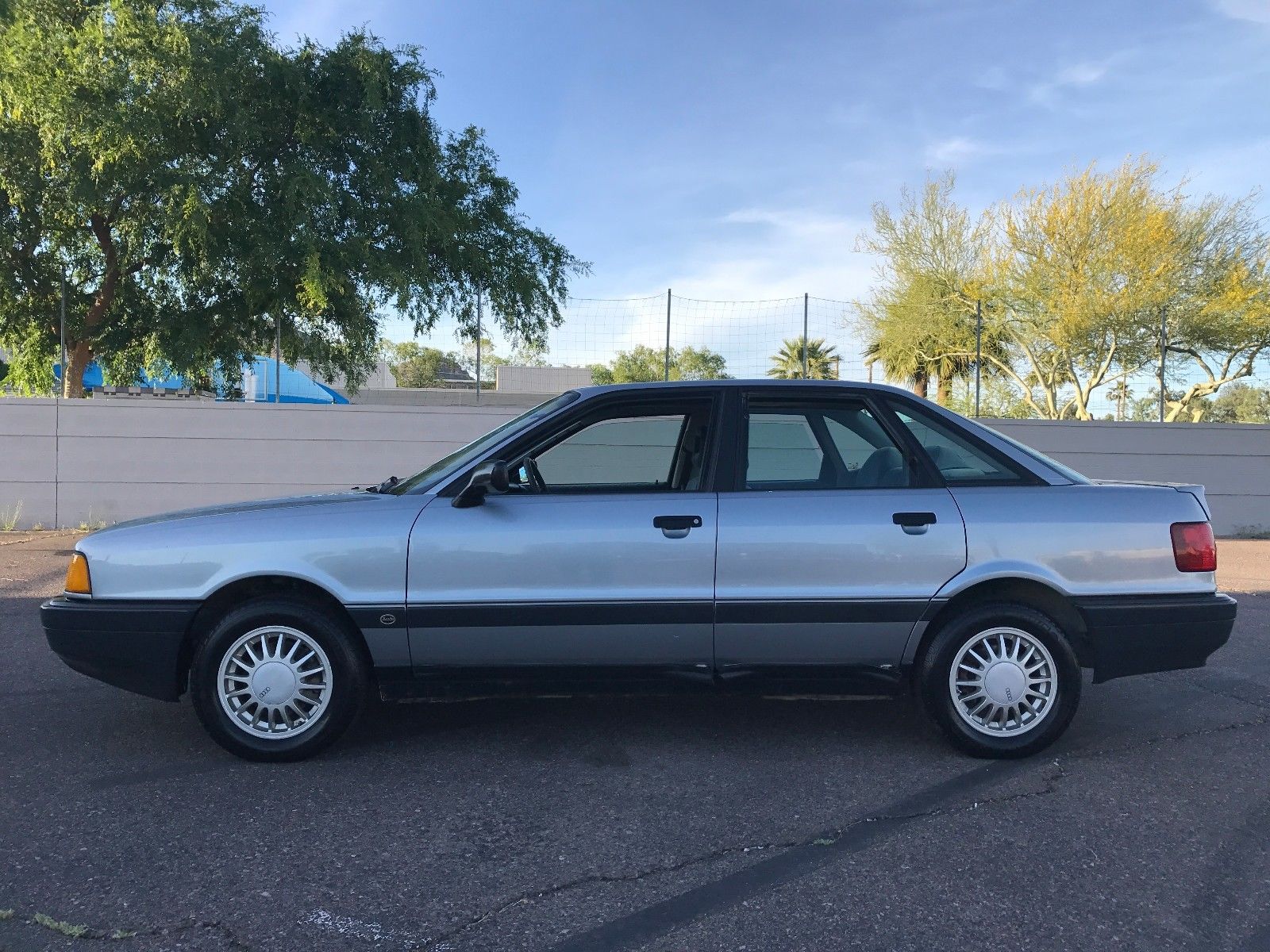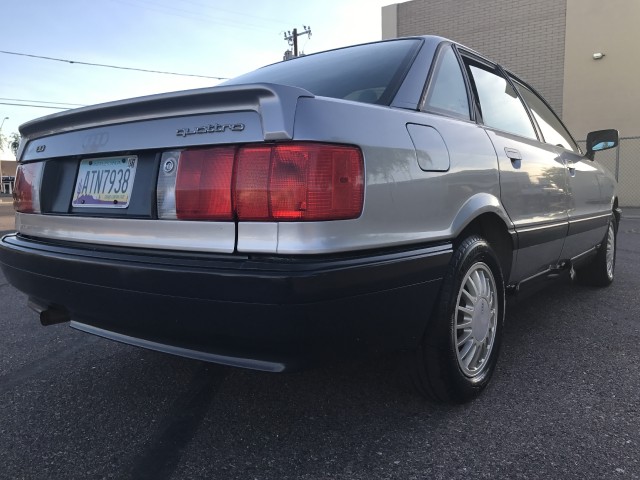As I covered in my last 90 quattro 20V post, while the sedan version of the small chassis mated with the 7A dual-cam EFI inline-5 may not have looked quite as sexy and evocative as the Coupe version, it was a bit quicker and more rare. That’s carried over to today; with such a small pool to begin with at only around an estimate of 1,000 imported here over the short 2-year production cycle, it bears to reason 25 plus years later there won’t be many in good shape. Factor in the typical Audi depreciation and lack of careful ownership downstream, and coming across a 90 quattro 20V like today’s 23,000 mile example is just to the left of impossible:
Tag: B3
While some may feel that my foray into BMW ownership has swayed me to the dark side of German motoring, I still have a very large soft spot for the classic inline-5 powered Audis. And one of the most outstanding deals, until very recently, was the S2 range. Oft copied in the United States as it was never offered, the S2 was available in frequently seen Coupe and far less found sedan and Avant variations. The last is best known in its ultimate development as the Porsche-built RS2, but even the standard S2 range was nothing short of impressive. With 220 horsepower available from the 3B and later ABY turbocharged dual-cam inline-5s driven through all four wheels, they weren’t the fastest off the line but could hang with their countrymen easily on the fly. As they near legal importation status, prices have started to rise slightly – but they’re still quite affordable compared to many other contemporary limited-run performance options. This ’96 is a great example:
CLICK FOR DETAILS: 1996 Audi S2 on Car and Classic
6 CommentsJust a few weeks ago, I spent a fair amount of time documenting the substantial changes to Audi’s small chassis lineup which accompanied the launch of new nomenclature in the B3 80/90 twins. But while early models like the 1988 90 quattro I wrote up for that article were mechanically identical to the “entry level” 80, changes were on the horizon. In 1990, the 7A-motored, dual-overhead cam 90 quattro 20V and Coupe Quattro replaced the 10V NG powered 90s, which were no longer available in the U.S. market. To accompany their upgraded 165 horsepower mill, the 90s featured an optional sport package which included 15″ Speedline wheels and upgraded brakes (standard, albeit in slightly different offset, on the Coupe).
Soldiering on with the 130 horsepower NG and slightly less flair was the 80. In fact, the 80 outlived the 20V motor in the U.S. into 1992, and was ultimately the last small chassis offering the 5-cylinder until the recent reintroduction in transverse layout in the MQB platform. While power and running gear was unchanged, the 80 received some of the 90’s signature bits from earlier on, including the BBS alloys and painted bumper covers. Like all B3 quattros, they’re exceedingly rare to come across; in the case of the 1992 80 quattro like the one here, a scant 640 made their way to our market.
CLICK FOR DETAILS: 1992 Audi 80 quattro on eBay
3 CommentsThe B3 was a much needed update to the very old small Audi chassis in the late 1980s. Although the addition of the 4000 quattro was only a few model years old and the Type 85 B2 had undergone a pretty comprehensive update in 1985, the reality was that it was a chassis which had been designed in the mid 1970s and was antiquated compared to the BMW E30 and Mercedes-Benz W201 chassis, both of which it was out of sync with in terms of launch. While both of those cars were in mid-life in 1986, Audi launched its new B3 platform with a heavily revised, updated and aerodynamic replacement for the popular 80 and 90. This was interesting, as the B2 would continue alongside in production for several years – notably in Coupe form – until the new 2-door was prepared.
The U.S. market’s offerings also didn’t mesh with Europe either in nomenclature or trim scale. The 4000 quattro had only come in one form – 4000S in 1984 and 1985, and 4000CS in 1986 and 1987. They were relatively loaded and all powered by the venerable JT inline-5. However, Europeans had enjoyed several different configurations; the basic 80 and more upscale 90, with many different options. Audi would continue the 4000CS in 1987, but in 1988 the new models rolled out, with two options like the Europeans had. As in the Fatherland, a prospective buyer could get the basic 80 quattro or opt for the more luxurious, upscale 90 quattro. Many of the design elements of the U.S. spec 4000s carried over into the 80 – such as the rear urethane flush spoiler and even the standard Ronal R8 alloys. But the 90 came with nicer bits, such body color bumper covers with integrated fog lights, wood trim inside, a more pronounced rear spoiler and BBS alloy wheels. You could also opt, for the first time in the small chassis, for the signature Audi color of Pearlescent White Metallic paint at an addition charge and power seats on the 90 quattro.
Mechanically, the 80 and 90 quattros were twins until 1990, and many of the options – ski sack, sport seats, heated seats, onboard computer – were shared between the two, but the 90 always felt a bit more upscale than the 80. Power came from the NG 2.3 inline-5, generating 130 horsepower and 140 lb.ft of torque; modest, given the near 3,000 lb. curb weight of the B3 – a result of the many luxuries and new protective technologies Audi introduced in the 90. The 80 and 90 beat the 200 to the market in 1988, meaning they were the first to debut the new second generation of all-wheel drive quattro to the U.S. market. It featured a driver-actuated lockable rear differential that automatically deactived at 15 m.p.h., but the center differential was now an automatic Torsen unit. The B3 also brought anti-lock brakes to the small chassis, as well as body galvanization. It was really a huge step up from the antiquated (if much loved) B2, overall:
